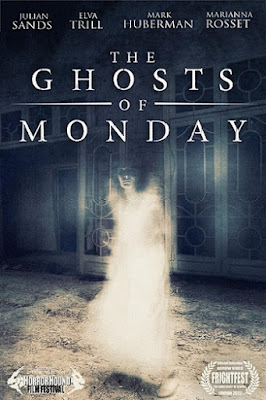How often have you wished cloying juvenile fantasies like the Harry Potter movies would turn into horror films instead. It sort of happens here, but not really. It is the Arthur series that started with Arthur and the Invisibles (Minimoys) that gets transformed. That film bombed in America, but it was a huge hit in Europe. Director Luc Besson blamed Harvey Weinstein for re-cutting it (always a safe strategy). Regardless, those kiddie fantasies meant a lot to Alex and his friends, so they set out in search of the original shooting locations, where they find trouble in Barthelemy Grossmann’s Arthur, Malediction, written by Besson, which releases on VOD this Friday.
This horror film takes a long time to embrace its genre. First, there is a long “cute” flashback to Alex’s slumber parties, devoted to watching the Arthur films. Then, we endure the festivities for his eighteenth birthday party, which is largely spent the same way. The only difference is his budding romantic attraction to his formerly platonic Arthur pal, Samantha (played by Besson’s daughter, Thalia). However, for part two of the celebration, the gang takes a road trip to the original Arthur house.
Despite previously published reports of an American shoot, the house is right there, in the Deliverance region of France. The locals are not welcoming, but they ignore the bad vibes. They also miss the clearly audible sounds of people scampering through the woods, up to no good, during the night. Finally, the predators start to make their move the next day.
The supposed “meta-ness” of Malediction is wildly overblown. This is really about as related to the Arthur series as Point Break is to Richard Nixon. However, it certainly says something that Besson would openly pursue the association. (Disney isn’t exactly the same family-friendly company anymore, but it is still hard to imagine them releasing a slasher film featuring a psycho wearing a Mickey Mouse mask.)
Basically, the film abruptly shifts from treacle to so-so survival horror. What really distinguishes the film is the disparity of the two halves. If you really know the Arthur films, the design of dilapidated is probably quite impressive. Even if you don’t, the film has a distinctive sense of place. Unfortunately, the vividness does not extend to the characterization.



























